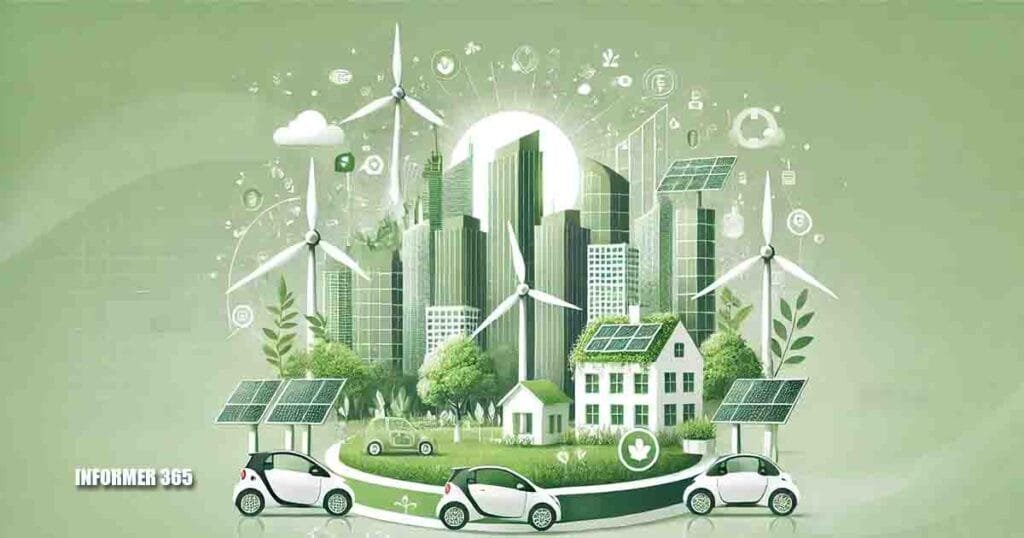In 2024, sustainability has become a global priority as countries and organizations understand the urgency of addressing climate change and environmental challenges. Major advancements are being made in renewable energy, agriculture, transportation, and construction. These developments show promise for a greener, more sustainable future.
Renewable Energy Growth: A Turning Point for Sustainability
The renewable energy sector is growing rapidly in 2024. Governments worldwide are pushing for cleaner energy sources to reduce greenhouse gas emissions. Solar energy is leading the way, with solar panels now achieving over 25% efficiency. Companies such as SunPower and First Solar are improving energy output and lowering costs.
Building-integrated photovoltaics (BIPV) are another significant development. These solar cells are integrated into building structures like roofs and windows, turning buildings into energy generators. Large-scale solar farms in countries like the U.S. and Germany now provide power to entire cities, reducing reliance on fossil fuels.
Wind energy is also expanding, especially through offshore wind farms. These turbines harness stronger winds over the ocean, increasing energy production. Denmark, the UK, and China are investing heavily in offshore wind technology, enhancing global renewable energy capacity.
Sustainable Architecture: Green Construction for the Future
Sustainable architecture continues to transform how we build. Eco-friendly materials like bamboo, reclaimed wood, and hempcrete are replacing energy-heavy options like concrete and steel. These materials are durable and have a lower environmental impact.
Passive houses are buildings that require minimal energy for heating and cooling, and they are becoming more common. These homes use advanced insulation and airtight construction to maintain consistent indoor temperatures. Many new buildings also incorporate smart technologies like solar-powered water heaters, making them more energy-efficient.
The Circular Economy: Revolutionizing Resource Management
As waste management becomes an increasing concern, the circular economy model is gaining popularity. This approach encourages recycling, upcycling, and reusing materials to reduce waste. Industries like fashion, electronics, and packaging are adopting circular economy practices to reduce environmental impact.
Brands like Patagonia and Stella McCartney are leading the way in the fashion industry with circular manufacturing. They use recycled materials and offer programs to recycle or resell garments.
In electronics, companies are designing longer-lasting products with recyclable components. Urban mining, which extracts valuable resources from e-waste, is helping reduce the environmental impact of traditional mining.
Sustainable Agriculture: Innovations for a Growing Population
Sustainable farming practices are key to meeting the needs of a growing global population. Vertical farming, especially in urban areas, is a promising solution. These farms use up to 90% less water than traditional farming and reduce the carbon emissions tied to food supply chains.
Regenerative agriculture is also making strides in 2024. Methods like crop rotation and reduced tillage improve soil health and sequester carbon. These practices support biodiversity and reduce the need for harmful chemicals in farming.
Electric Vehicles: A Step Toward Cleaner Transportation
Electric vehicles (EVs) are more popular than ever in 2024. Manufacturers like Tesla and Rivian are expanding their EV offerings to include cars, trucks, and SUVs. Improvements in battery technology and charging infrastructure have made EVs more practical, even for long-distance travel.
Electric buses and trains are also gaining traction in cities worldwide. In places like London and Los Angeles, electric public transportation systems are helping to reduce emissions and improve air quality.
Progress Toward a Greener Future
The eco-innovations of 2024 demonstrate the power of technology and collaboration. Renewable energy, circular economy practices, and sustainable agriculture are all making a positive impact. While challenges remain, the path toward a sustainable future is clear. Continued efforts to embrace these eco-friendly innovations can lead to a greener world.


